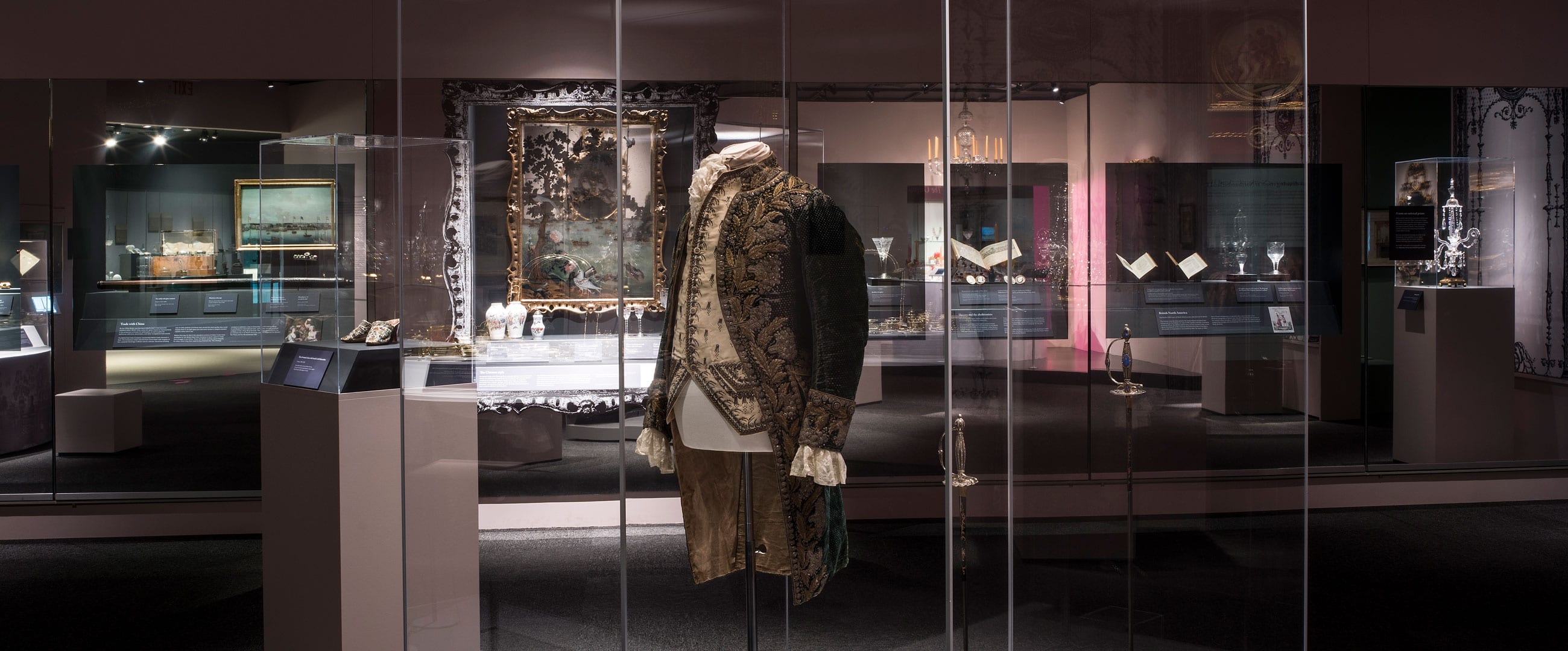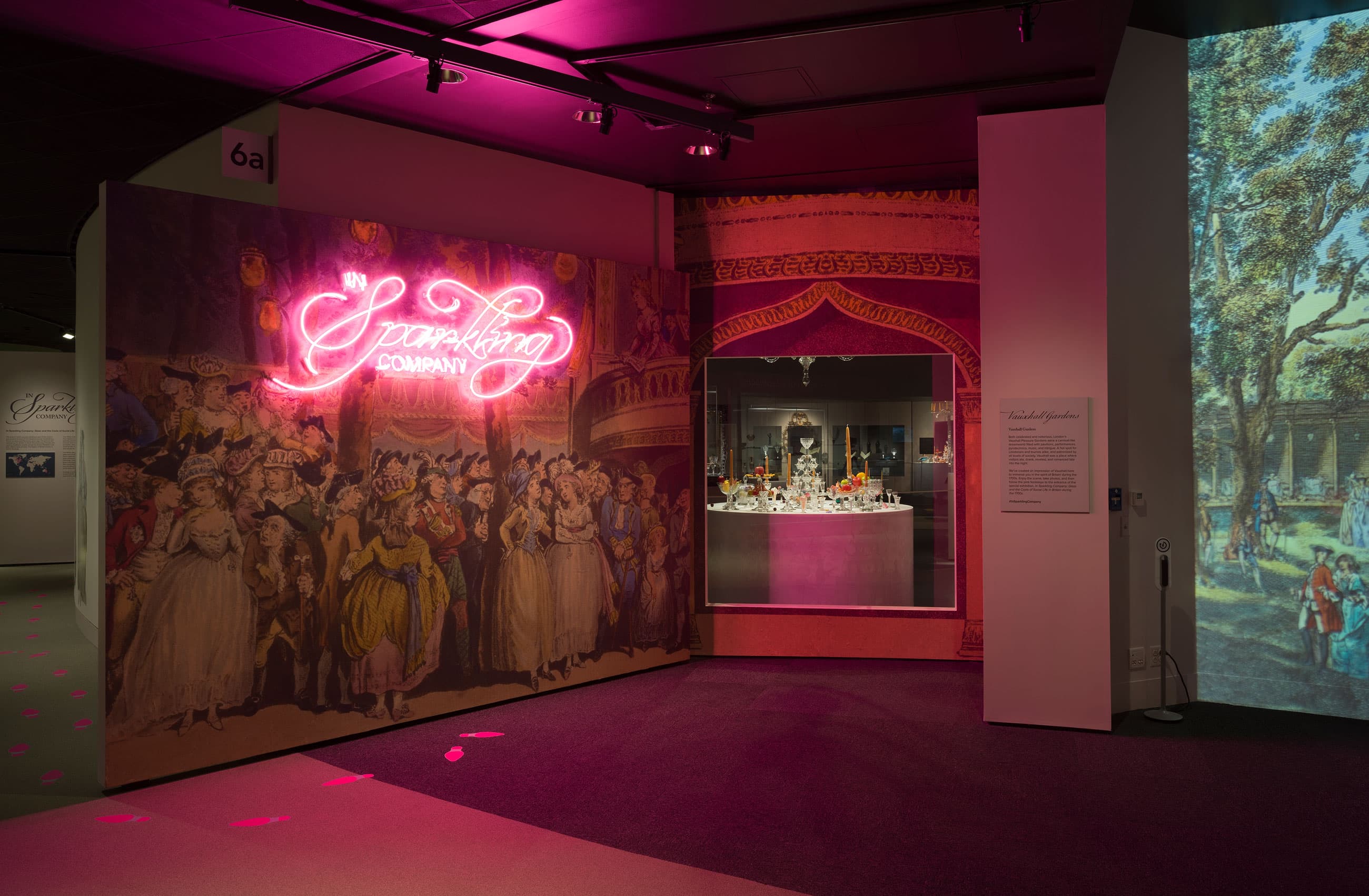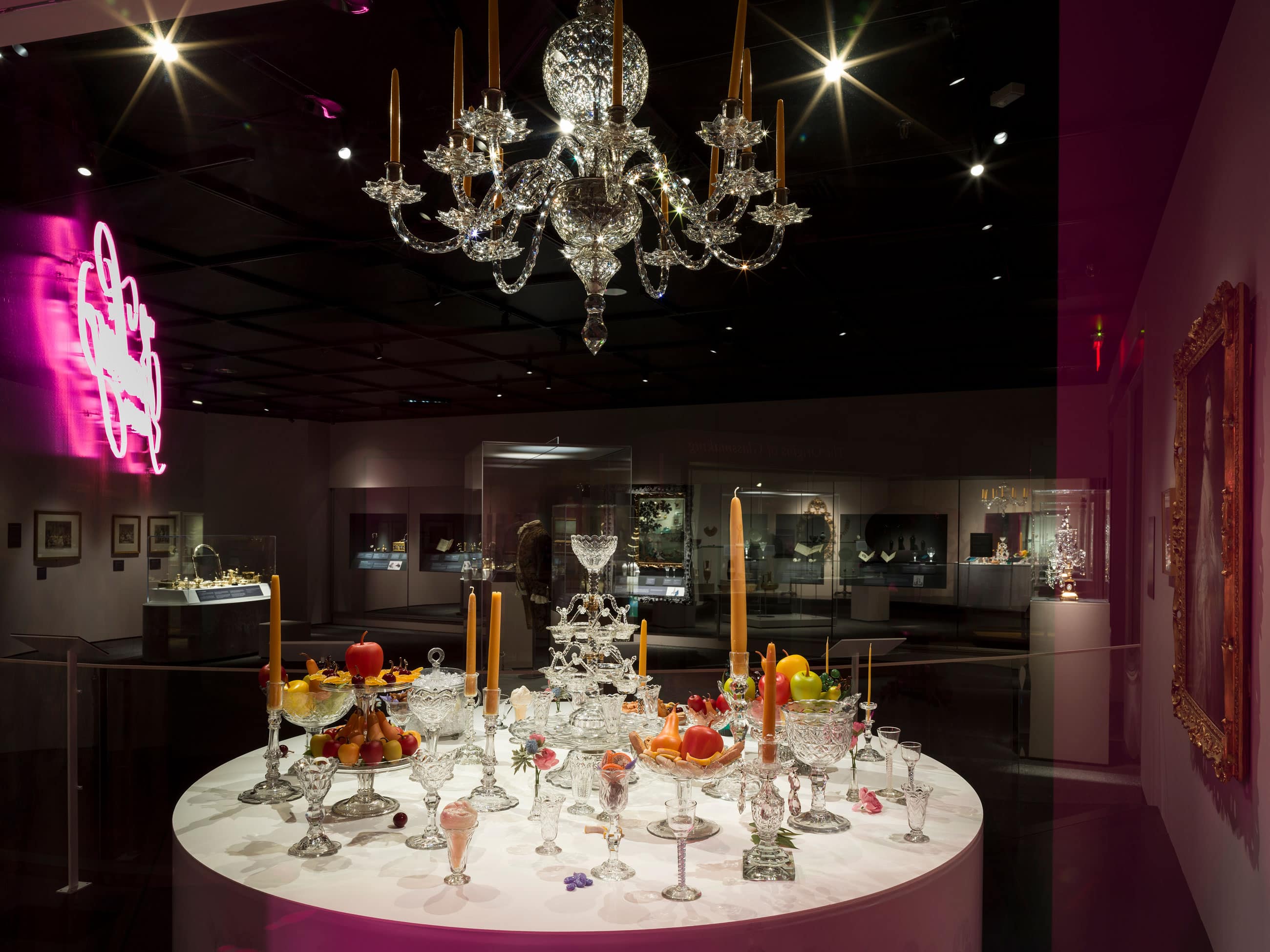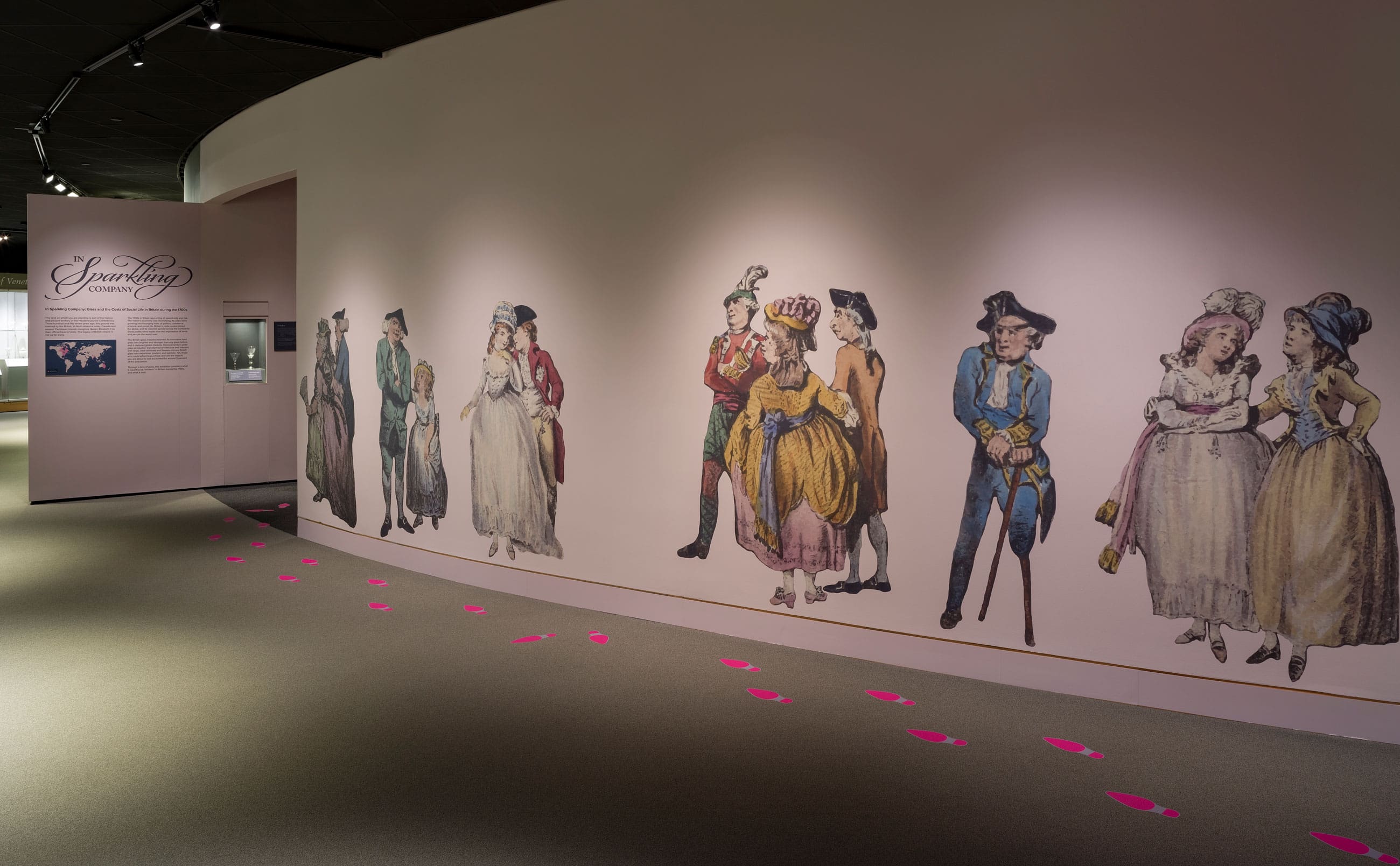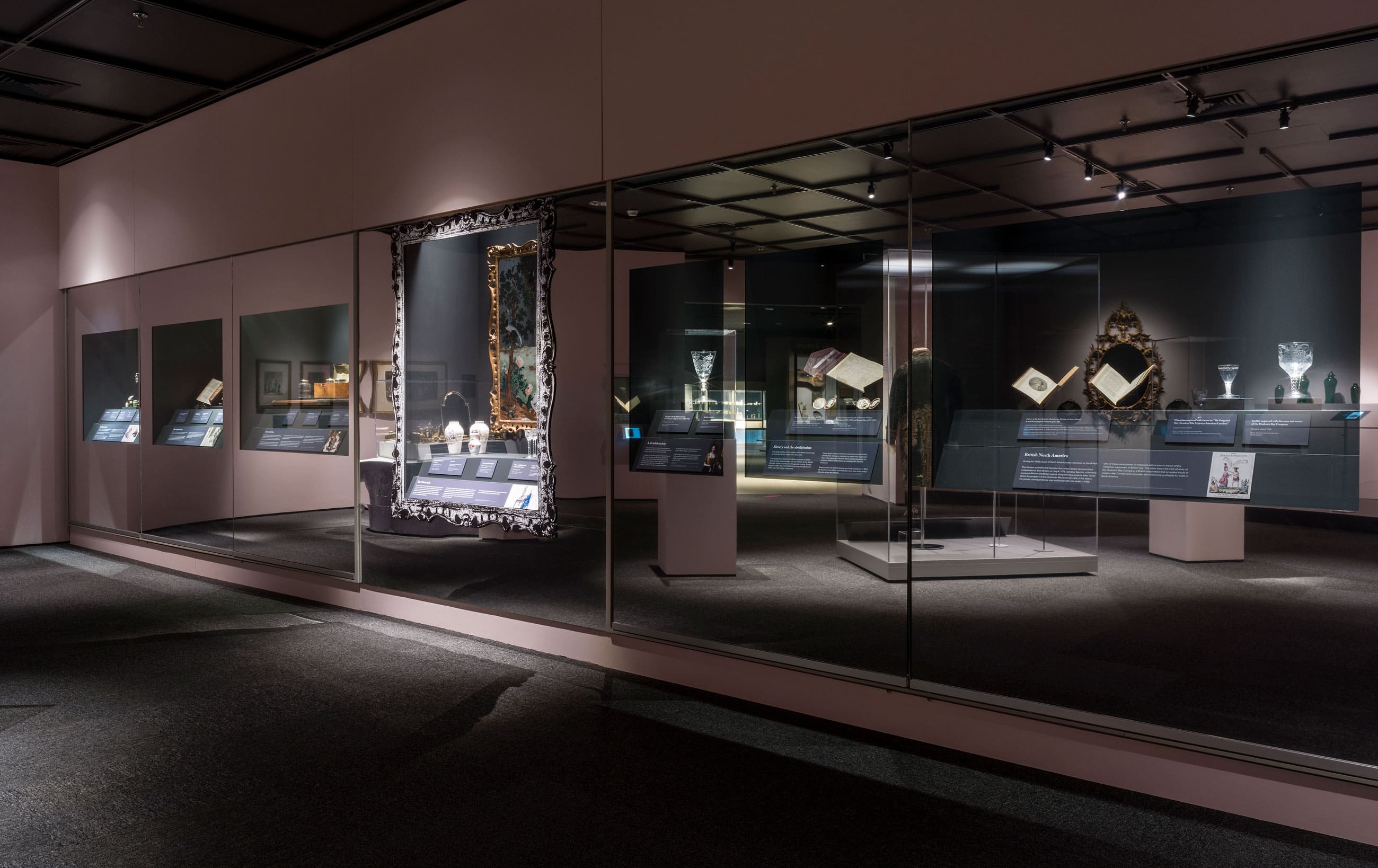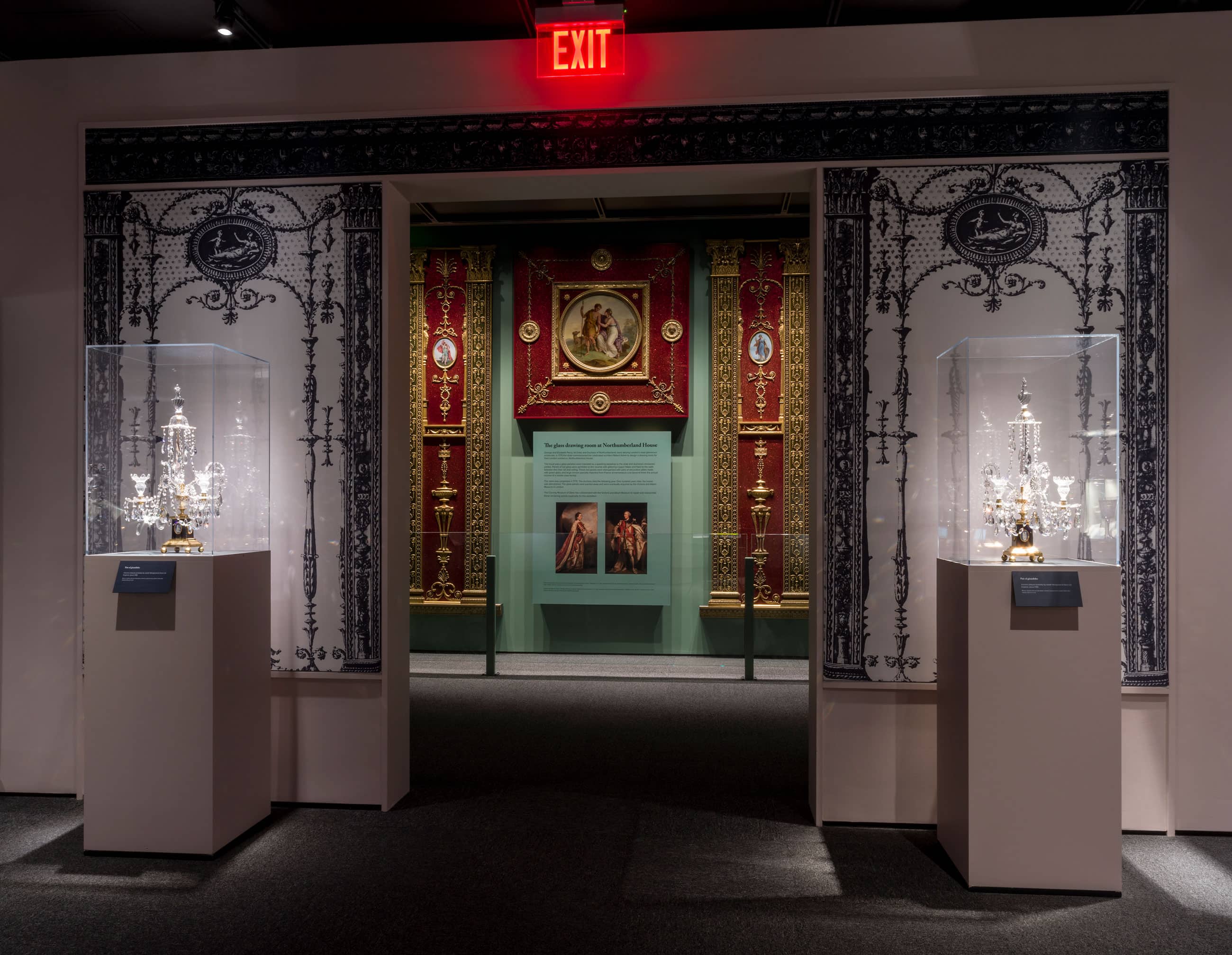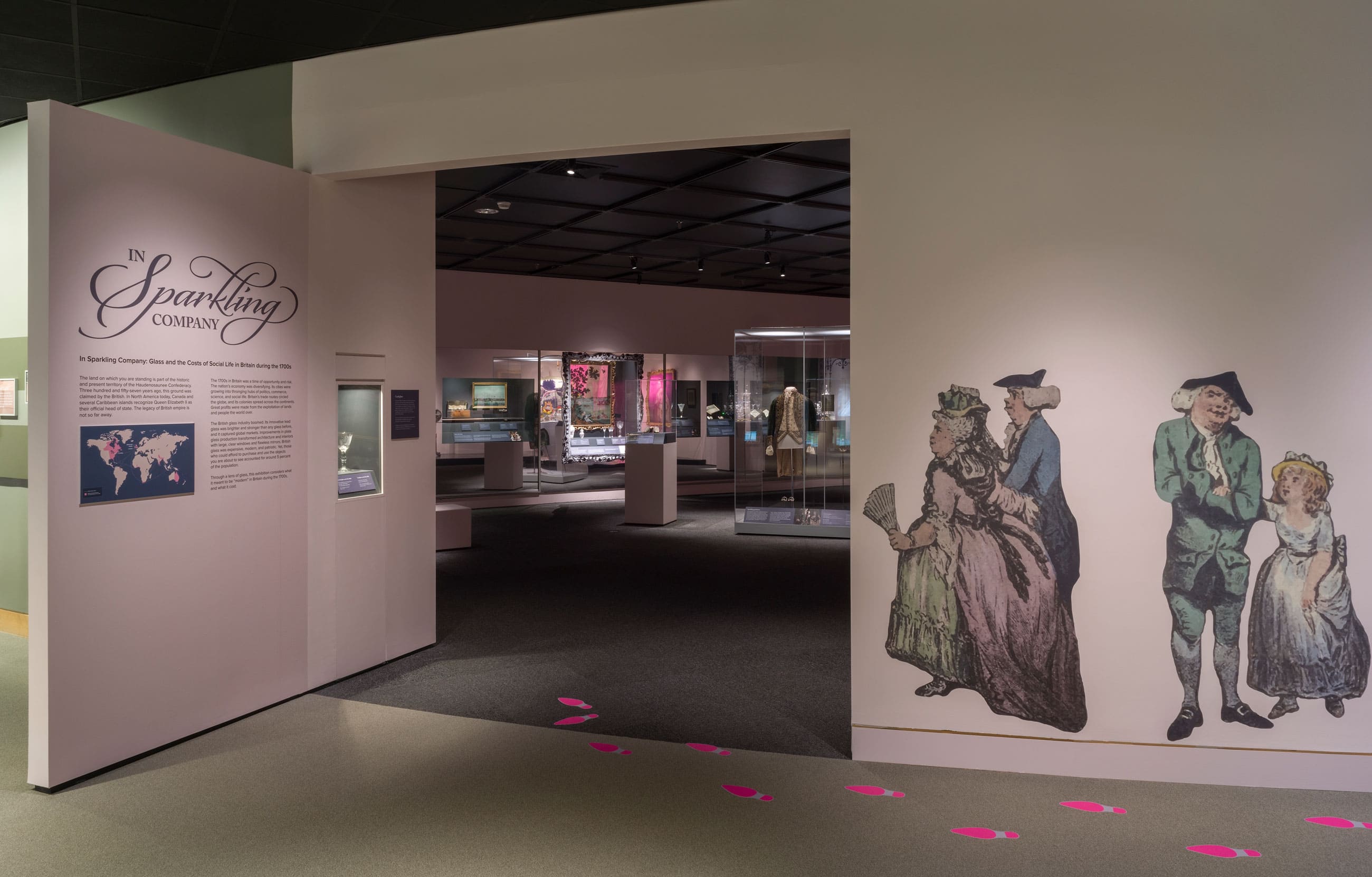
“In Sparkling Company: Glass and the Costs of Social Life in Britain During the 1700s” at The Corning Museum of Glass presents the glass objects, ornaments and elaborate finery that epitomized the elite class of 18th-century Britain. While demonstrating Britain’s innovations in glass design and production at the time, the show depicts the extravagances of the Georgian period through its decorative objects, furnishings, portraiture, clothing, interiors and formal gardens. The exhibit illuminates the human cost underlying such glittery excess, with these possessions commonly acquired through wealth attained from the profits of slavery, and the exploitation of workers to produce and maintain such an opulent way of life.
Read more Close
The exhibition is a lively and captivating journey into the era. In designing the presentation, the challenge was how to manifest a social lifestyle in a physical space. The circulation narrative unspools an aristocrat’s day, beginning with the time’s more formal process of being dressed in the morning and ending with the genteel rituals illustrated by a dessert table. While historical, the vignettes imbue modernity: The objects represent the vanguard of their time but are shown with a modern perspective. The entry immediately establishes this juxtaposition with a bright pink, glowing neon sign in a florid classical script mounted on a large-scale reproduction of a historical print.
An adjacent room with a curved wall immerses visitors into an animated scene of the historic Vauxhall Garden, a popular pleasure garden in London, projected with music and birdsong. Adding a sense of discovery, a window offers a glimpse into the exhibit, revealing the dessert table setting composed of an array of faceted lead glassware lit by a crystal chandelier. The elements are somewhat abstract because while the arrangement is complete, the table surface is a clean tableau eliminating any context. The main gallery has a “mirrored wall” that frames specific portals to focus viewers on the intricate jewelry and objects. An ornate frame around the center portal reinforces the sense of gazing through.
The mirrored wall gives the room a dramatic presence. The incorporation of mirrors is a design motif, symbolizing the era’s self-indulgence and the reflectivity of glass. Throughout the rooms, a sense of transparency between spaces eases the flow, such as a printed scrim instead of panels leading into the Northumberland Room, which is an immersive, virtual reality reconstruction that displays conserved panels from the Northumberland House Glass Drawing Room on loan from the Victoria & Albert Museum in London.
- Client:Corning Museum of Glass
- Location:Corning, NY
- Date:2021
(Photography: Courtesy Corning Museum of Glass)
